An Annual Adventure at Smithsonian Gardens
As summer draws to a close, one of Smithsonian Gardens’ newest staff members, Phil Evich, shares his thoughts and observations from time he spent rotating through each of the Smithsonian gardens and landscapes earlier this season. Phil was able to work with all the Smithsonian Gardens horticulturists, which gave him a better understanding of the designs and themes that go into our annual displays each year. This is the first of a two-part series.
I journeyed into the wonders of Smithsonian Gardens with only an impression of the work ahead of me. I joined this strong team of horticulturists back in January and was heartily overwhelmed, to say the least. In the spring, under pink clouds of blooming magnolias, tulips flashed their bold colors and then faded. By late April the gardens were preparing for a transition, one much larger than I could have expected. As I popped bulbs out of the still cold soil and composted overwintered pansies, dreams of summer were beginning to take shape. Then May arrived and with a new soil knife in hand I began planting many hundreds of the thousands of annuals that now greet you upon visiting the many Smithsonian museums. But for now I can’t take any credit for that…
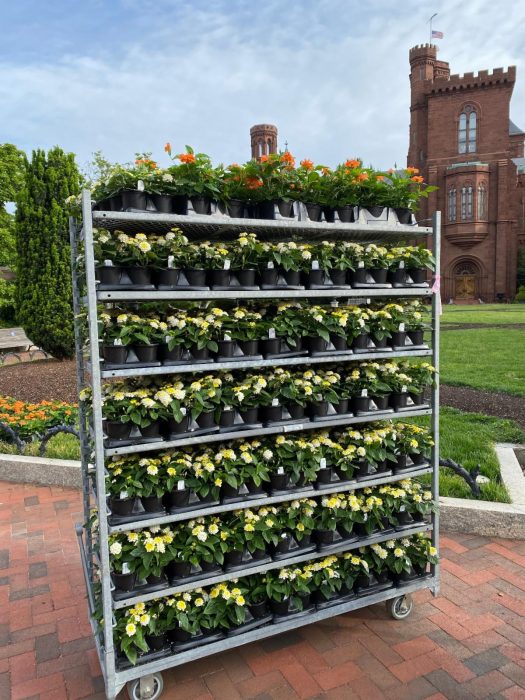
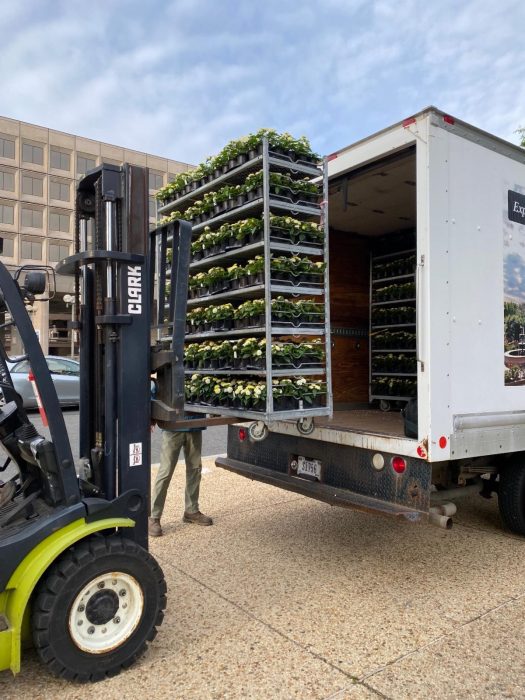
May means business for the Smithsonian Gardens team. Each day that month, trucks loaded with racks of plants were driven from the Smithsonian Gardens Greenhouse Facility to the staging site at each museum. The greenhouse team received plant requests the previous fall and got to work sourcing seeds for propagation over the winter and early spring. How amazing is it to work with such a vibrant diversity of plants, all grown in-house? We are incredibly lucky. With plants on hand, the digging commences. “But what goes where, and why? And what plant is that? And how many plants are going in the parterre of the Haupt Garden?” All these questions were racing in my mind as I pulled pots off a sea of ‘Little Lemon Glow’ Lantana that would soon find a home in the crossing lines of the parterre garden. There would be time for answers, but planting was underway and the gardens were quickly filling with a breath of new life. Working with so many gardeners across the campus, with so many new plants, I settled in to learn all I could from the experts at Smithsonian Gardens.
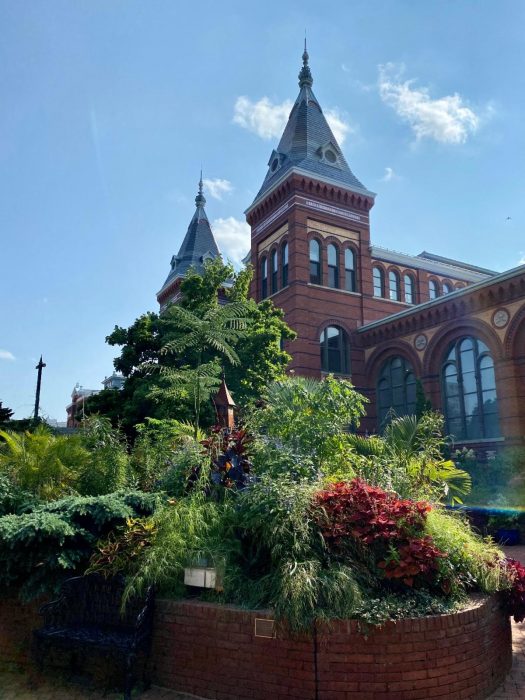
I observed as gardeners and horticulturists each orchestrated a different symphony of textures, color, shape, and foliage from plants that stretched all over the world. Janet Draper of the Mary Livingston Ripley Garden wanted to diverge from her usual harmonies of blue and orange and conduct a “Tropical Explosion.” She consulted with the tropical growers at the greenhouse and let them pick four palms to be the foundations of the design. Janet leaves the rest as an intuitive art, selecting from a wide range of specimens, including for the first time plants from the Butterfly Pavilion at the National Museum of Natural History. Janet reminded me that “Flowers are fleeting. Foliage is what holds a garden together.” As I headed out to the Folger Rose Garden, I brushed against a weeping Otatea demanding to be noticed. Her lesson stuck.
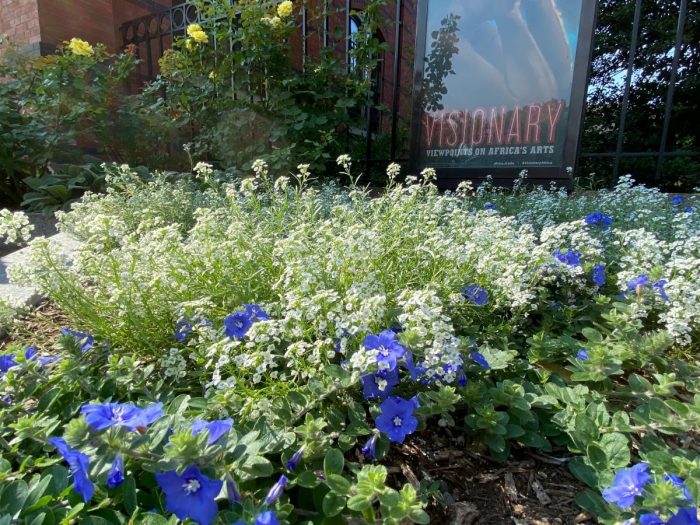
The Kathrine Dulin Folger Rose Garden is maintained by Shelley Gaskins, who is tending a relatively new installation of disease-resistant roses. Working with one of the most classic perennials, I was intrigued by how Shelley uses annuals against the fragrant petals of the rose. “I like to use blues, whites, and silvers because they don’t clash with the roses.” White Alyssum creeps throughout the entire garden, giving the impression of a soft wave break bubbling on the shore of her garden. She plants it every year “because the beneficial insects love it and it smells great, although it performs slightly better in the cooler seasons.” In a garden famous for its roses, annuals are used as tools to fill gaps and add accent around the rosy showstoppers.
The Rose Garden sits peacefully next to the immense Smithsonian Castle. Neatly manicured in large swathes of orange Lantana, Coleus, and Begonias with an almost true black leaf, the work of Rick Shilling gracefully smooths out the Castle’s Victorian edges. Large tropicals like bird of paradise (Strelitzia sp.) and the stunning variegation of Colocasia ‘Black Beauty’ add a third dimension to the garden, rising up from the flowers and inviting you to ponder the way different textures and leaf sizes create a garden you have to stop to admire. Rick’s favorite color yellow is featured prominently this year around the nearby Ripley Kiosk. “I start with a color and work from there when drafting a design. You have to know where the sun and shade hits at different parts of the day and how that’s going to affect your plant selection.”
On the south side of the Castle is the Enid A. Haupt Garden, the elegant formal garden of the Smithsonian. With crisscrossing diamond patterns of turf, four large “buttons,” and fleur-de-lis hedges, the parterre is a relic of Renaissance design which commands balance, symmetry, and simplicity. Horticulturist Michael Riordan chooses plants that are reliable and disease-resistant to prevent a crop failure from affecting the entire design. Working in such a large and notable garden, there isn’t time for error. Spacing out plants before they are installed is done with the help of a tension line to assure that each plant is exactly where it needs to go. The meticulous planting is done by a large team of gardeners and volunteers who come out for a morning to install the entire design, double checking each other’s work and fine tuning as we go.
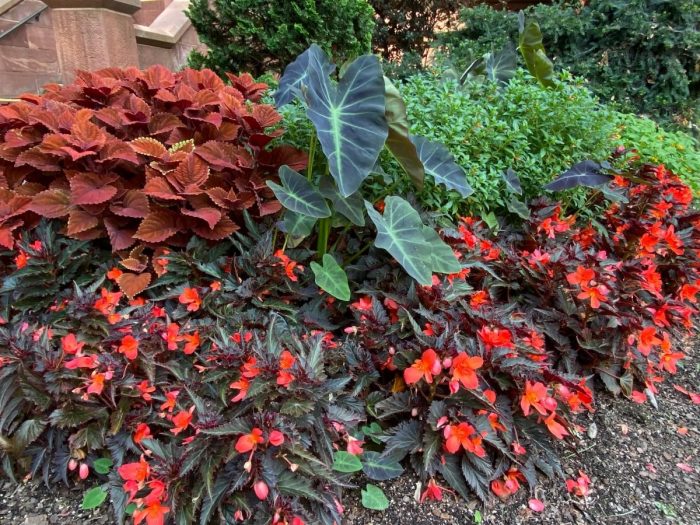
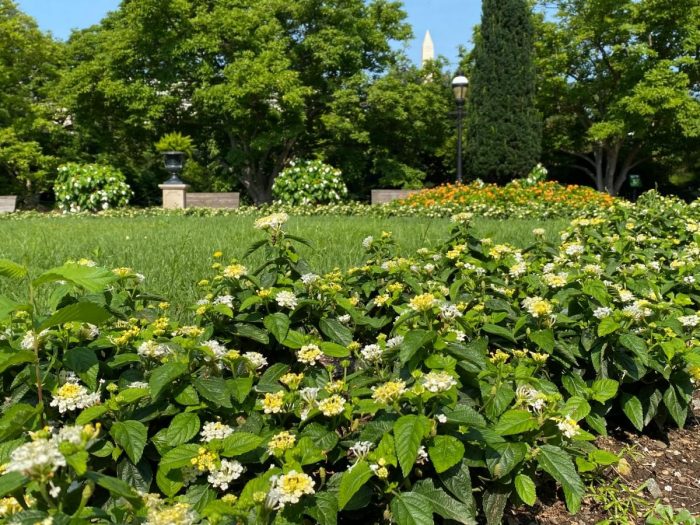
I continued on with Eric Calhoun who is leading the planting efforts at the National Museum of African American History and Culture. Here, annuals are concentrated near the entrance and around the border of the outdoor café area. Eric’s plant choices reflect the relationship between themes explored inside the museum and culturally significant food crops, such as okra and hibiscus. The blend of beauty embedded with meaning highlights the deeply entwined history that humans share with plants. Eric is mindful of the site’s established perennials when choosing colors for his designs, holding up different flowers such as Cuphia ‘Vermillionaire’ against the pale grey-green of the Perovskia or the dark seed pods of Baptisia. “I focus on texture and foliage to gain contrast against flowers.” Near the entrance in raised planters, Sarah Tietbohl designed a bold palette of rich foliage using Colocasia ‘Hawaiian Punch’ and Coleus. The rich colors stand out under the awning of the museum and look great with the Washington Monument in the distance. Sarah also is responsible for maintaining the Hirshhorn Museum and Sculpture Garden where she uses Asclepias ‘Ice Ballet’ to tie the perimeter of the Sculpture Garden to the perennial white flowers of Gaura on the slopes of the interior garden, where color is muted in order to highlight the sculptures.
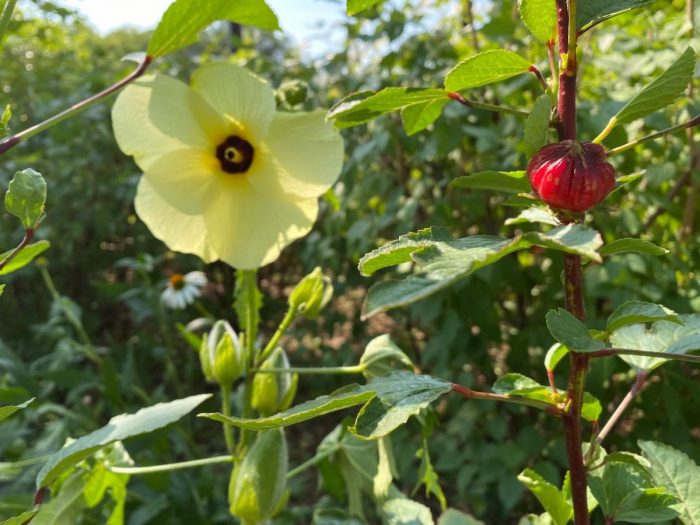
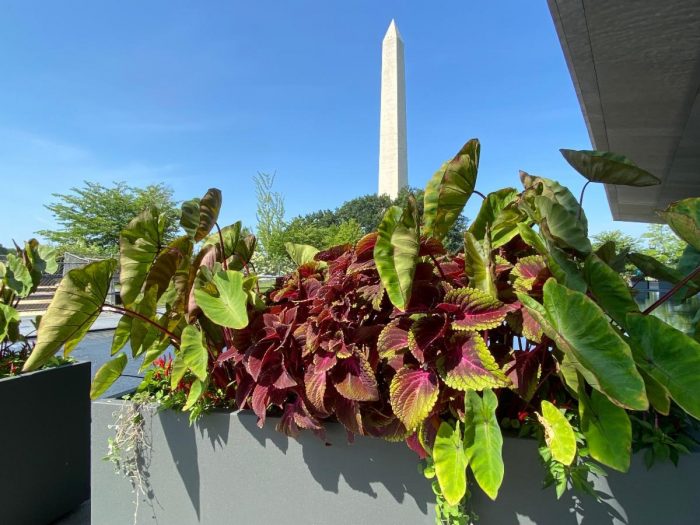
This post by Philip Evich was originally published in the August edition of the Smithsonian Gardens newsletter. Visit their blog for more gardening news and watch for Part 2 of Phil’s “Annual Adventure.”
Posted: 18 August 2021
-
Categories:
Education, Access & Outreach , Feature Stories , Science and Nature








Fantastic article, Phil! I appreciate the details being written with great poeticism.
Good job.